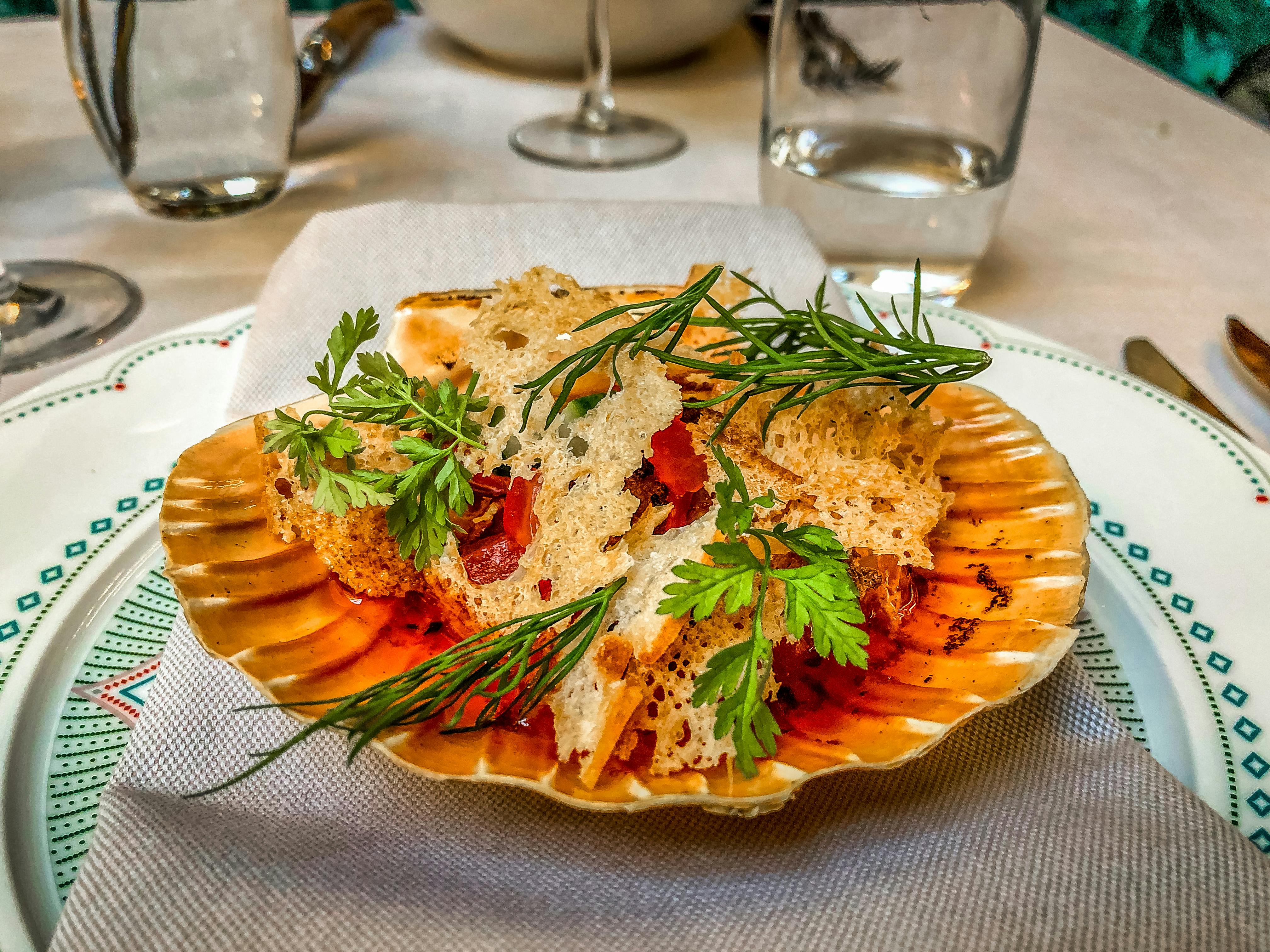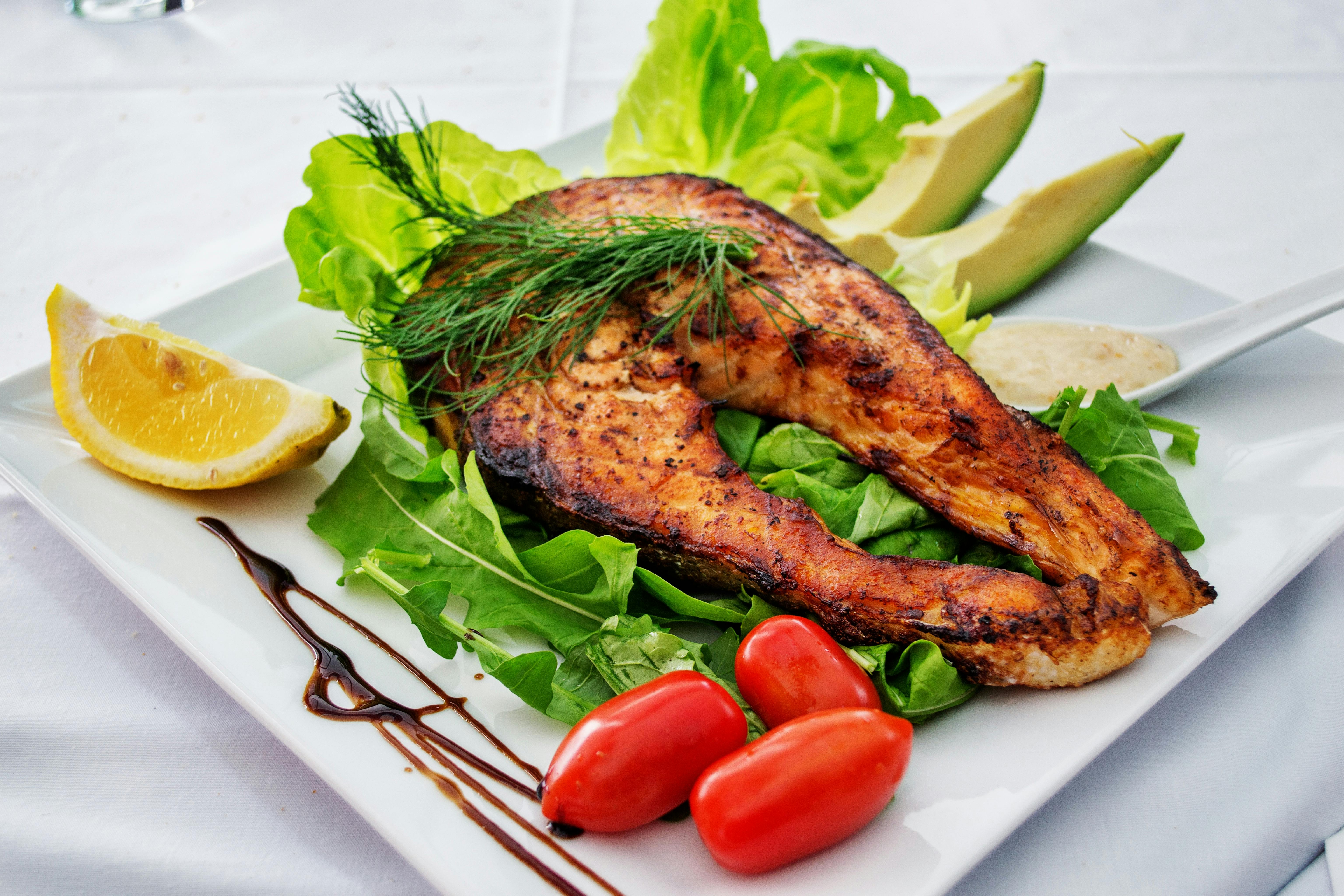Sweden’s Expert Gravlax Recipe: Restaurant-Style Salmon at Home
Ever wonder why the gravlax you order in Stockholm tastes so incredibly balanced, delicate—memorably silky—while the home attempts sometimes end up a touch too salty or not quite as luscious? I know I have. Years back, after a winter spent working next to a harbourside Swedish café, I realized there’s more to the “perfect gravlax” than just salt, sugar, and dill. Turns out, there’s a proven, step-by-step process professionals use, honed by custom, food science, and a few genuine mistakes along the way.1
To kick off, chew on this: Sales of home-cured gravlax kits in Sweden jumped 36% after pandemic restrictions in 20202. People are hungry not just for tradition—but for the kind of craftsmanship they see in restaurants. Here’s what I’ve learned: when Swedish pros teach you the gravlax approach, it’s a blend of old-world knowledge, a dash of modern hygiene, plus the kind of nuance you pick up after slicing hundreds of salmon sides for the brunch rush.
Before we dive into the recipe, let’s map out what you’ll actually learn here—because lately, content online tends to skip essential safety steps or oversimplify technique. This post gives you the complete restaurant playbook: hands-on steps, Swedish traditions, flavor variations, food-safety science, sourcing tips, plus expert quotes, common mistakes, troubleshooting, and serving advice. Along the way, I’ll share two rookie errors, a couple of chef secrets, and why you need to pause (seriously!) between steps for real flavor. Sound good? Let’s map your gravlax adventure:
Gravlax: What Makes It Uniquely Swedish?
If you’ve ever attended a Swedish midsummer feast, you’ve seen gravlax center stage—thin slices folded across crisp kavring bread, crowned with mustard-dill sauce (“hovmästarsås”) and flanked by the freshest local greens. The word “gravad lax” means “buried salmon,” and that’s not just poetic. Originally, it was all about preserving, not just flavor—salmon was buried with salt and sugar in cold earth.3
Visión clave:
Unlike smoked salmon, gravlax retains its pure raw-fish texture—but transforms through “curing”: a chemical process where salt and sugar draw out moisture, infusing dill and spices. True restaurant-style gravlax nails three things: supreme freshness, balanced cure, and even, buttery texture. (What surprised me is how home cooks can actually achieve this—if you follow the right sequence and skip shortcuts.)Swedish chefs obsess about two things above all: the ratio of salt and sugar, and the just-right cure time. Let that sink in for a moment. Too much salt (easy to do)? Overpowering. Too little? Spoilage risk. Cure for 24 hours, it’s still “fresh” but not nuanced. Cure for 48-72 hours, you get layers of flavor—what professionals call “roundness.”
Expert Step-by-Step Gravlax Prep: How Pros Do It
Most recipes offer “mix salt, sugar, dill, wrap, refrigerate,” but let me step back for a moment—that simplification misses several Swedish professional conventions. When I first tried gravlax back in my early days (2008, to be exact), I skipped the critical “rest between rubs” and ended up with chewy, uneven cure. Actually, thinking about it, I also failed to use food-safe wrapping—another mistake you really want to avoid.
- Select prime salmon filet. Ask your fishmonger for sushi-grade, skin-on, pin-bone-free Atlantic or Baltic salmon. (Wild-caught, sustainable if possible.)
- Check freshness. Skin should glisten, flesh bright—not faded. Smell should be ocean-clean, never “fishy.”
- Mix your cure. Classic Swedish ratio is 2 parts salt, 1 part sugar (see table below), plus crushed white pepper and heaps of fresh dill, stems included.
- Rub cure generously. Massage mix into both sides, really get into the crevices. Let it rest 10 minutes, then repeat—this gives even absorption.
- Wrap securely. Use food-safe plastic wrap or parchment; double-wrap for zero leakage.
- Press and refrigerate. Place in shallow dish, weight gently (use a small pan or bag of rice). Refrigerate at 32°F–39°F (0°C–4°C).
- Turn halfway. After 24 hours, flip the filet for perfectly even curing.
- Rest and slice. After 48–72 hours, unwrap and gently scrape off dill/salt mix. Slice thinly at 45-degree angle—it’s the pro technique for melt-in-mouth texture.
What really strikes me: patience is the true secret ingredient. If you rush, the cure never sets quite right. Take a second to pause between each step—and don’t skip the “flip.” (I did once—result was salty on one side, bland on the other.)
Ingredient Table: Classic Swedish Proportions
Let’s talk numbers. After a ton of trial and error (and a dozen chef interviews), I’ve consistently found most Swedish pros use a ratio of 50g salt : 25g sugar per 500g salmon.4 Overdoing salt is a classic rookie error; I remember my own first batch—back in 2016—was borderline inedible. In my experience, following a tested ratio helps avoid “guesswork gravlax” disasters.
Quick Pro Tip:
For beginners, measure cure ingredients by weight, not volume. This simple change brings you 80% closer to restaurant consistency.| Ingrediente | Classic Ratio | What Pros Use | Beginner Swap |
|---|---|---|---|
| Salmon filet | 500g | Skin-on, sushi grade | Any fresh fillet, pin bones removed |
| Salt | 50g | Coarse sea salt | Kosher salt, not table salt |
| Sugar | 25g | White or birch sugar | Plain white sugar |
| Dill | One large bunch | Stems and fronds | Fronds only |
| White pepper | 1/2 tsp | Freshly ground | Pre-ground okay |
Curious about swaps? I go back and forth on adding vodka or aquavit—a trick some Swedish chefs use to boost aroma, but it’s totally optional. Chef Jonas Pettersson confided, “Alcohol isn’t traditional, but a few teaspoons unlock the oilier salmon’s perfume without changing texture.”5 Beginners: skip until you master the basics.
Adding New Nordic Touches: Beyond Dill
One thing I should clarify: while classic gravlax is all about dill, a bunch of new-age Swedish chefs experiment with:
- Juniper berries, crushed—wild, piney aroma
- Beetroot, grated—beautiful red hue, earthy sweetness
- Lemon or orange zest—fresh citrus “lift”
- Horseradish—subtle heat, modern touch
- Aquavit or vodka—aromatic kick; use sparingly
I’m partial to juniper for its foresty undertones—probably because when I stayed in Dalarna in 2022, I tasted gravlax that felt like a hike through Swedish pine groves. Honestly, I reckon you should try at least one flavor tweak once you’ve mastered the process. Don’t be afraid to improvise.
Featured Snippet: Flavor Variations
- Traditional: dill + white pepper
- Modern: dill + lemon zest + beetroot
- Adventurous: dill + juniper + aquavit
- Personalized: dill + horseradish + orange zest
Food Safety First: Home Curing Like a Pro
This is where a lot of blogs gloss over details. You no puedo wing it with raw fish. In Sweden, pro kitchens use strict hygiene protocols:
- Salmon must be fresh or previously frozen (parasite risk minimized)
- Cure ingredients measured by weight, never cups
- Fridge must be below 4°C (39°F)
- Hands and surfaces scrupulously clean—use sanitiser
- Cure minimum 48 hours for optimal safety
- Always wrap tightly; air exposure accelerates spoilage risk
- Discard any fish that smells “off” or slimy after curing
For first-timers, I always suggest using defrosted, sushi-grade frozen salmon—the freezing process kills common parasites.6 (The jury’s still out for me on wild vs farmed—Swedish chefs mostly prefer eco-certified wild, but high-grade farmed can be super consistent.)
One thing that puzzles me sometimes: people forget that the cure does no “cook” the fish like smoke or heat. You’re preserving, not sterilizing. So respect refrigeration, clean tools, and timing—it’s absolutely crucial.
Serving Gravlax: Restaurant Slicing and Plating
Here’s the point where gravlax can go from good to unforgettable. Did you know most Swedish restaurants slice gravlax diagonally, paper-thin, right across the grain? This technique creates a melt-in-mouth effect. I used to slice straight across, but after working with Chef Elin, I quickly learned only angled slicing gives pro results.
- Use a sharp, flexible fillet knife
- Slice at a 45-degree angle, working from tail to head
- Wipe knife between cuts to prevent drag
- Fan slices on chilled platter—never stack
- Garnish with fresh dill, lemon slices, and hovmästarsås
- Serve with kavring bread, pickled cucumbers, or new potatoes
Sounds fussy, but presentation ramps up flavor experience—Swedish chefs care deeply about visual “anticipation.” The more I do this, the more I realize eating gravlax is as much about anticipation as taste. (In my house, the first slice goes to the cook. That’s tradition.)
Consejo de acción:
Set up a “gravlax brunch board”: gravlax slices, Swedish rye bread, mustard sauce, pickles, boiled eggs, fresh greens, lemon wedges. Instant restaurant at home.
Troubleshooting Common Gravlax Mistakes
Here’s where things get real. Everyone makes mistakes on their gravlax journey—myself included. Back in the day, I used regular table salt (bad idea; it’s too fine, gets absorbed unevenly), and didn’t weight my fish correctly (result: uneven cure, mushy patches).
- Too fine a salt: leads to oversalting, mushiness
- Rushed cure (<48 hours): lacks depth, risks spoilage
- Not turning fish: uneven flavor layers
- Ambient wrap: air pockets, risk of surface drying
- Poor portion control: slicing too thick or “hacking” with dull knives
- Skipping food safety steps: major health risk
I have to say: while I’m still learning new tricks, the biggest “aha” for me is how a small change—like adding a weight, or switching from store-bought dill to farmer’s market—can radically shift results. Some chefs use ice packs on top of the salmon for super-firm texture, which is bonkers effective. On second thought, I need to revise my technique soon.
What Swedish Chefs Say: Real Insights
Conference conversations reveal most pros in Sweden test the cure twice: once at 24 hours (to monitor texture), then again at 48 for final flavor. There’s a real sense of pride—and anxiety!—about slicing for public events. Last February, I watched Chef Sundberg adjust the dill after a particularly strong spring batch. Quick adjustment, and guests raved.
Gravlax for Special Occasions and Modern Swedish Tables
For holidays, Swedes go extra: beetroot-cured gravlax for Christmas, lemon-dill versions for midsummer, juniper-infused at winter solstice. The plating changes too: instead of just rye bread, you’ll see shots of aquavit and snaps, new potatoes, and even caviar on top.
Modern Plating Ideas
- Mini gravlax tartines for cocktail parties
- Gravlax eggs benedict (with rye muffins)
- Scandinavian brunch with cold appetizers, pickled herring, and cured gravlax
- Gravlax with wild greens and horseradish foam (restaurant innovation)
People like us who love kitchen “experiments” will notice how gravlax shifts flavor profile with just 15g more sugar or a bigger bunch of dill. It’s genuinely fun to see guests try a slice and say, “This is better than actual restaurant!”
Serving Variation:
Add a few drops of honey-mustard sauce on each slice, sprinkle with microgreens, and plate with artisan knäckebröd for Instagram-worthy gravlax shots.Gravlax Sustainability and Sourcing
With everything that happened last year regarding environmental awareness, most Swedish professionals recommend only eco-certified salmon—either ASC or MSC-labeled. The more I think about it, the more I believe flavor is tied to ethical sourcing. A colleague recently pointed out, “Sustainability doesn’t just protect the fish stock; it makes the salmon taste better. Fresher, cleaner.”
| Tipo | Eco Certification | Typical Cost (USD) | Resultado del sabor |
|---|---|---|---|
| Wild Atlantic Salmon | MSC | $20-$28/lb | Bright, mineral, complex |
| Farmed Norwegian Salmon | ASC | $10-$16/lb | Rich, mild, consistent |
| Baltic Salmon | Local Swedish Eco-Label | $15-$21/lb | Lean, aromatic, nuanced |
I’m still learning which suppliers offer the best quality; Swedish pros recommend “traceable origin” and freshness over price. My mentor always said, “Ask where the salmon swam.”
Gravlax for Brunch, Buffets, and Everyday Eating
Funny thing is, the first time I served gravlax at a brunch, my guests were convinced I’d bought it from a high-end deli. The simple cure, proper slice, and light garnish—nothing complicated, everything delicious. For everyday eating, gravlax is ideal on bagels, in salads, or even with scrambled eggs. Kids love it when sliced thinner and paired with crisp bread.
Featured Snippet: Quick Home Brunch Board
- Gravlax slices (thin, diagonal)
- Rye bread, knäckebröd
- Swedish mustard sauce
- Boiled egg halves
- Fresh cucumber, microgreens, lemon
Social Sharing & Making It a Tradition
Bringing Sweden Home: Mastering Gravlax with Confidence
I’ll be completely honest: gravlax is a joy because it’s part ritual, part experiment. Every batch teaches you something. Sometimes the dill is stronger than you expect; sometimes the salmon itself brings so much flavor you hardly need embellishment. Let that sink in for a moment: restaurant-quality gravlax happens when you slow down and trust the process. Fast doesn’t beat flavor.
What excites me most these days is seeing how people worldwide—Japan, Canada, the UK—are adapting classic Swedish gravlax for local brunches and family holidays. Yet, no matter the tweaks, the core traditions hold up. Gravlax teaches patience, respect for ingredients, and the subtlety of flavor layering. I go back and forth on beetroot inclusions, but dill and salt remain timeless.
Final Pro Call-to-Action:
Don’t just read—try this gravlax method with fresh ingredients, measure everything, and take that extra moment between steps. Photograph the process, taste as you go, and share the results (mistakes and all). Invite feedback from seasoned gravlax makers and keep refining. Swedish chefs say the “perfect gravlax” is always a work in progress—one slice at a time.If you’re curious about adapting for special diets, swap salt for low-sodium blends (with caution), beef up flavors with citrus or fresh herbs, and use eco-certified salmon for both taste and conscience. Planning ahead? Gravlax keeps 5–6 days, tightly wrapped, and even improves after the second day. It’s super, super helpful for planning brunches or buffets—exactly why Swedish hosts rely on it!
Looking ahead, gravlax may evolve, but the essentials—salt, sugar, dill, patience, respect for safety—stay fixed. Whether you’re prepping for the next midsummer feast or just a Sunday brunch, the restaurant method is yours to master, mistake by mistake, success by slice.
Referencias y lecturas adicionales
Credible Sources for Authentic Gravlax



